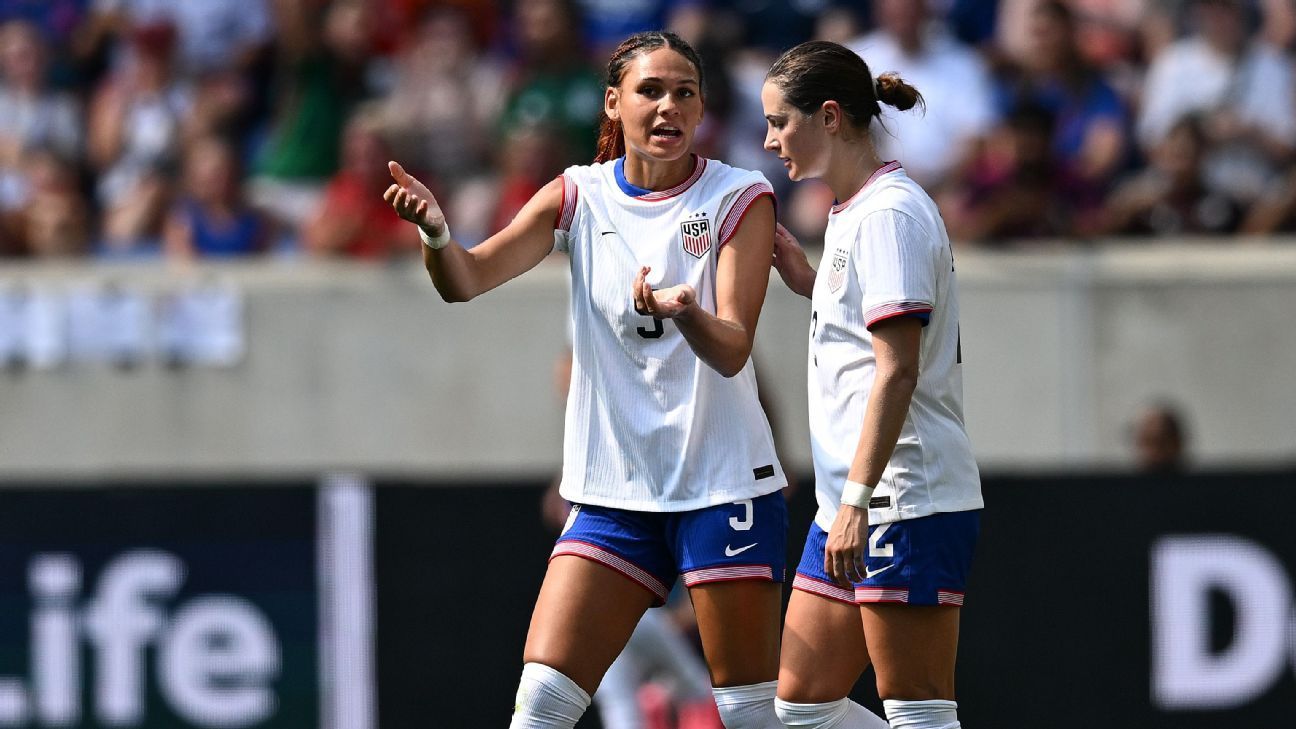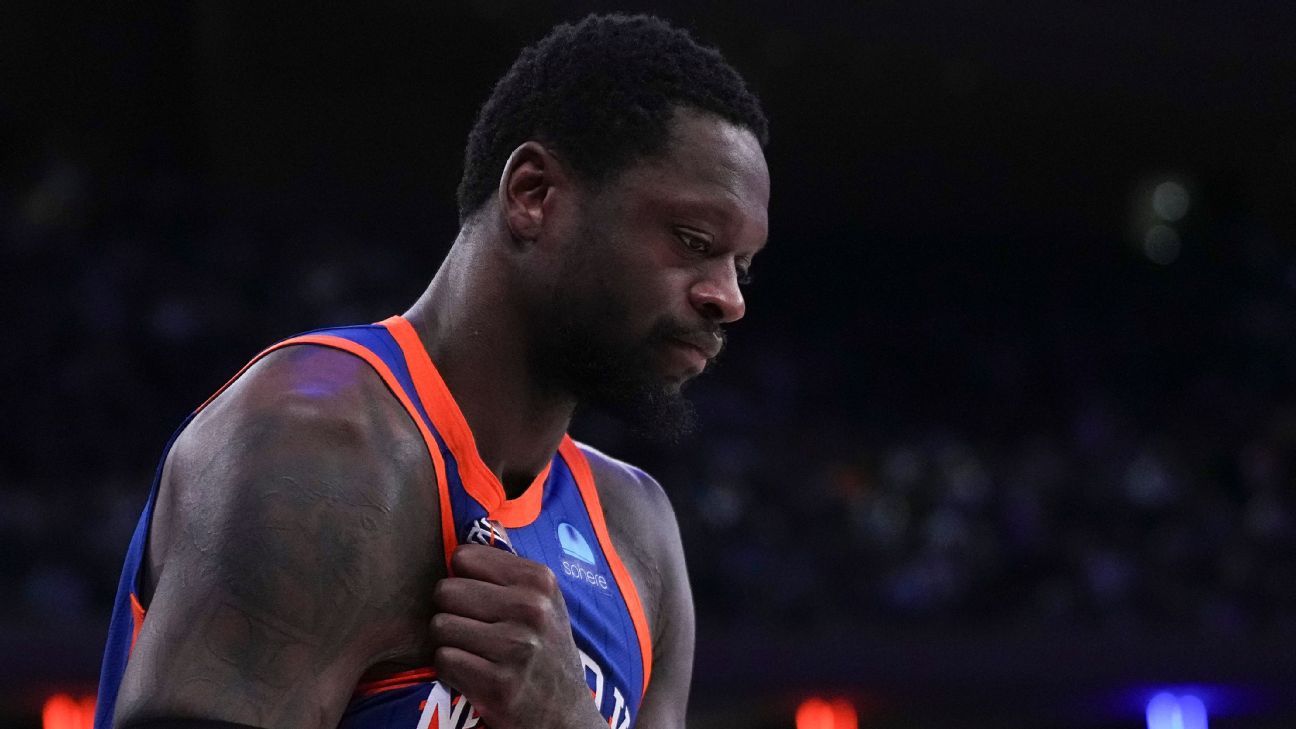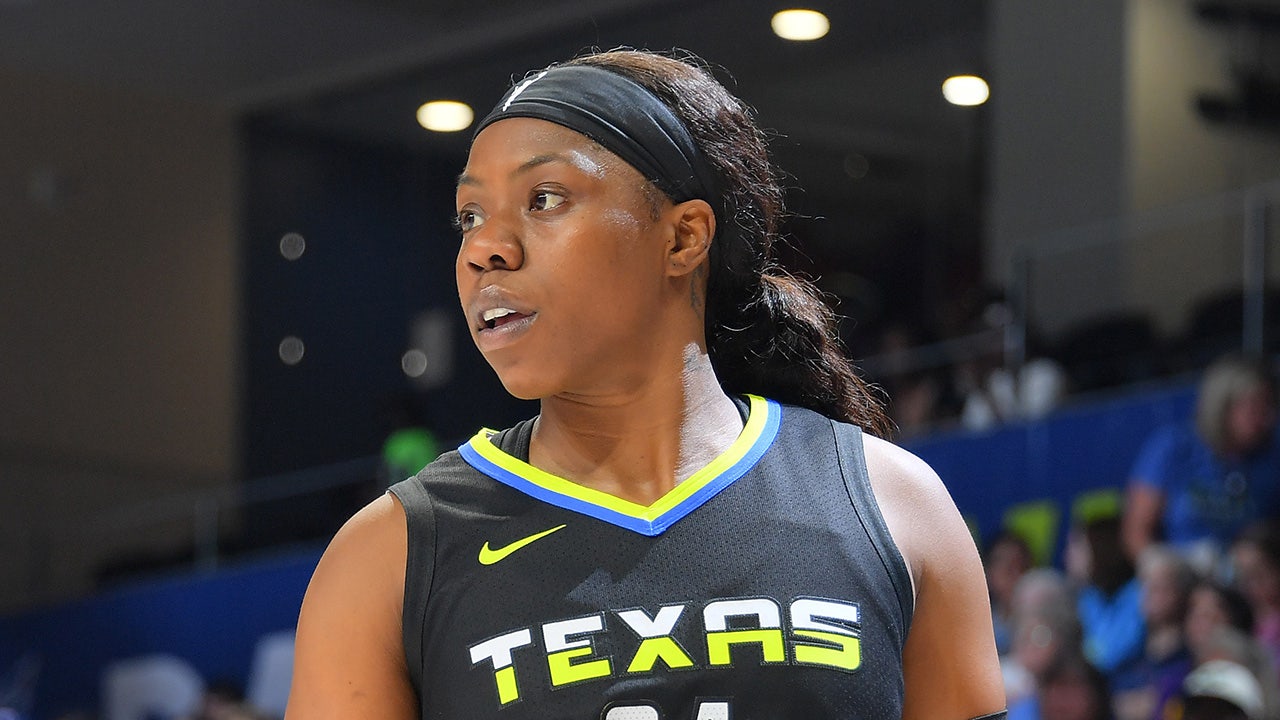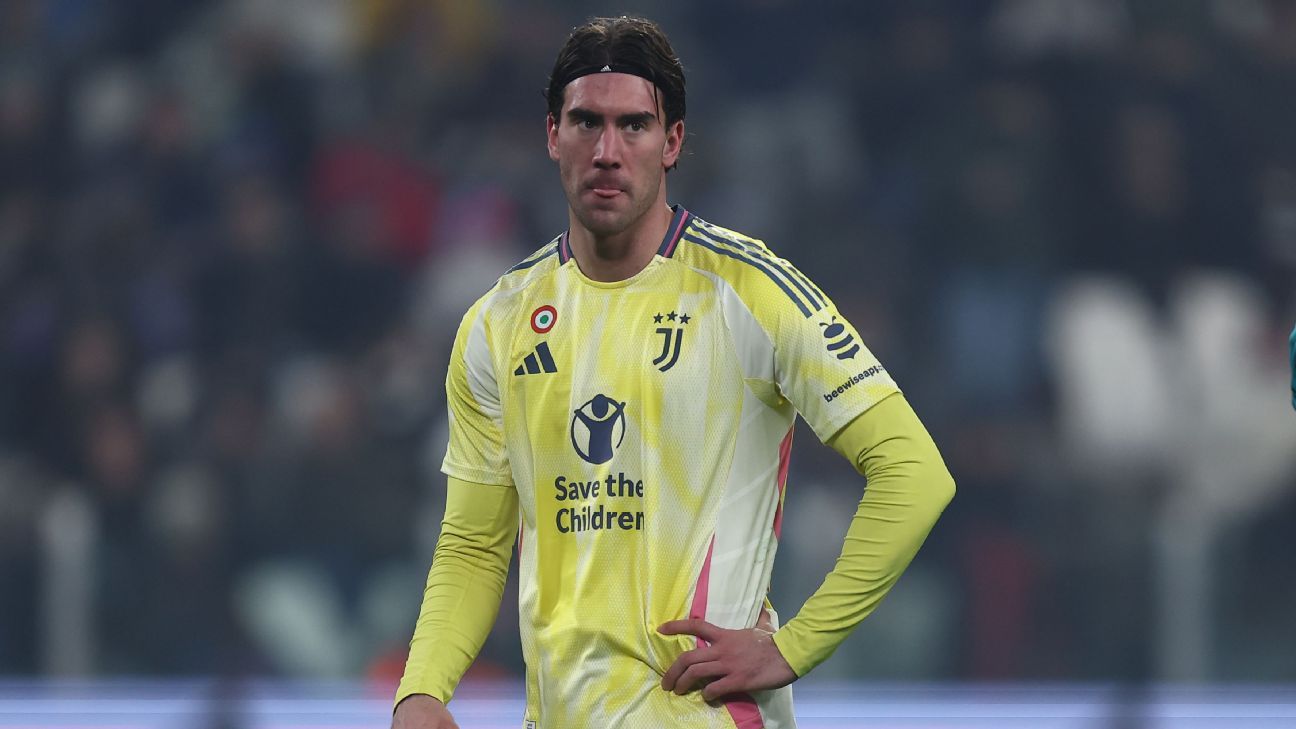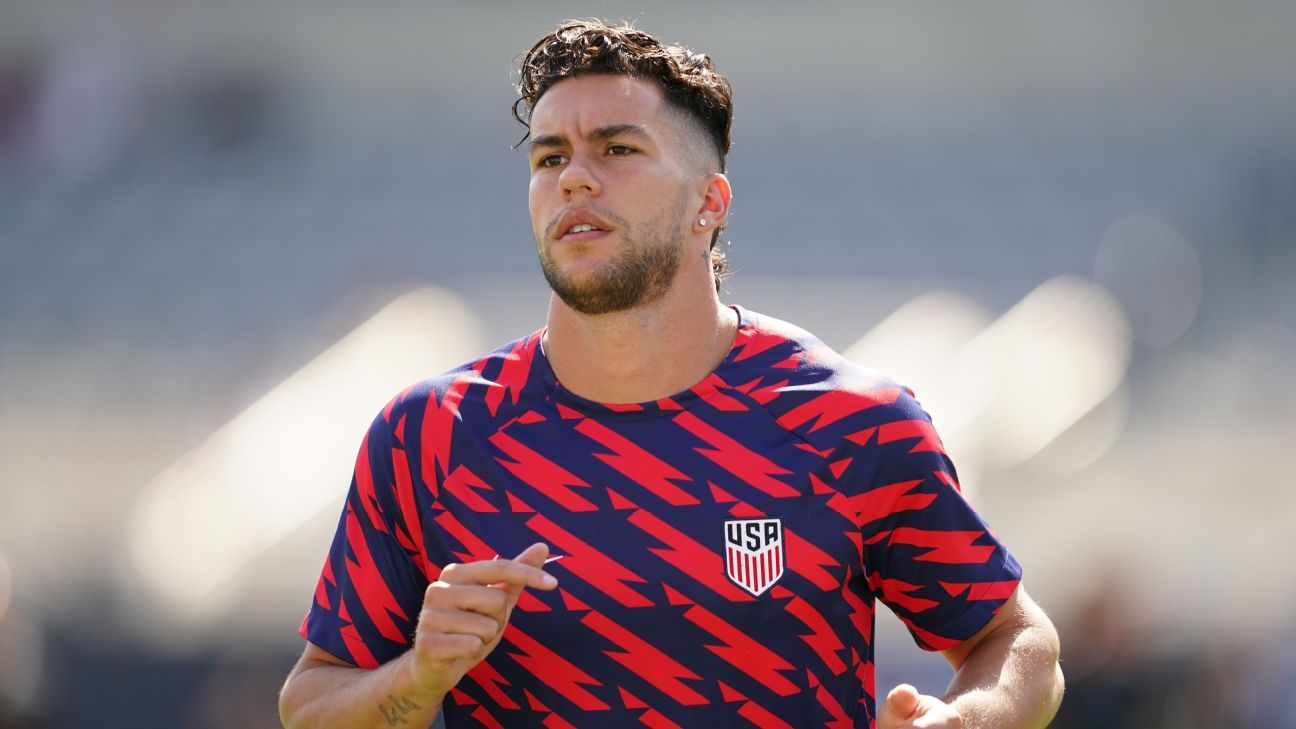At every opportunity to repeat the company’s longstanding line that the standard for the U.S. women’s national team is a gold medal or failure, new head coach Emma Hayes has instead paused and offered a more calculated, nuanced response.
Hayes hasn't said the goal is anything less than a gold medal, nor has she committed to that being the only acceptable outcome for a U.S. women's team in the midst of a rebuild. She continues to live in a culture around the U.S. women's team in which the expectation is to win everything when she knows they can't win everything anymore.
“I'm never going to tell anybody not to dream about winning,” Hayes told a small group of reporters during his appearance in New York City in late May. “So, go ahead, it's important for us to have that.”
“But as I said before, we have to take it step by step and focus on all the little processes that need to be done so that we can perform at the highest level. If we can perform at the highest level, then we have the opportunity to do things. But we have work to do. The reality is that world football is where it is, and the rest of the world is not as afraid of the U.S. as it was before, and that is valid.”
The U.S. women's national team enters the 2024 Olympics with four World Cup titles and four Olympic gold medals, each a record. The Americans have never failed to win a World Cup or subsequent Olympics since the tournaments began being held in consecutive years in 1995 and 1996.
That record is in a precarious position in France this summer.
The U.S. women's national team had its worst finish at a major tournament in history last summer, losing on penalties to Sweden (an old foe, adding insult to injury) in the round of 16, marking the first time the program finished worse than third at a World Cup.
It wasn’t just that the result was bad in a vacuum: The Americans played with such little imagination that they only narrowly escaped the group stage thanks to a scoreless draw with Portugal, saved by a narrow margin when Portugal’s late shot crashed off the post. It was the clearest evidence yet that the U.S. was no longer the mighty global powerhouse, the team that had won back-to-back World Cups in 2015 and 2019. The world hadn’t just caught up: other top-tier teams had leapfrogged the U.S.
Former coach Vlatko Andonovski took much of the public scrutiny, but players almost unanimously struggled to adapt to opponents in real time. It was clear the problems ran deeper than what could be fixed by parting ways with a coach. Now, with the Olympics just around the corner, questions linger from the World Cup: Are the players ready to compete in a modern landscape with teams more competitive than ever?
During the World Cup, Hayes herself publicly questioned the U.S. women’s national team’s ability as a detached observer and part-time commentator, pointing to a lack of creativity among the Americans. She was ultimately hired as an answer to those questions, too. Her hiring was widely praised as the best possible outcome of the search for a new coach, a level of ambition and reform that stood in stark contrast to the U.S. Soccer Federation’s decision to maintain the status quo on the men’s team, the results of which were confirmed at this year’s Copa America.
Now, the Olympics are here and Americans, impatient as they are, want immediate answers and results. The U.S. women’s team’s last Olympic gold medal came in 2012. High-level sources around the sports world, since the U.S. women’s team’s elimination from the 2023 World Cup, have expressed concern that a second consecutive poor showing at a major tournament could set the program back for years and further embolden the rest of the world.
The reality, though, is that Hayes’ primary mission is to win the 2027 World Cup. While the Olympics will always have a certain cachet, the Women’s World Cup — a singular spotlight for teams — is the most impactful podium finish. It’s also far enough away to allow for a realistic amount of preparation time.
Neither Hayes nor U.S. Soccer Federation sporting director Matt Crocker would admit it, but Hayes’ hiring was clearly focused on the long term — on the upcoming World Cup, not the short-term Olympics. Hayes and U.S. Soccer agreed to allow Hayes to finish the European season with Chelsea, meaning he would have four friendlies and less than two months on the sidelines left before the Olympics.
No one, not even someone with Hayes' vaunted coaching acumen, could have developed a gold medal-winning team in that time, especially a team that has been revamped after such recent disappointment. Hayes has said as much, perhaps most recently with a hint of frustration after Tuesday's frustrating 0-0 draw with Costa Rica in the team's farewell match.
Hayes paused for 10 seconds in the middle of his first response to a question alluding to disappointment at the goalless draw, before saying: “[Trinity Rodman] “He may have scored a great goal in the last minute, but the goalkeeper had an outstanding game. Yes, we need to be more effective. I don't need to state the obvious, but I think when you've had half a dozen training sessions in total since I've been a manager, I think it's a good result so far.”
0:50
Emma Hayes isn't worried about outside noise ahead of the US women's Olympics
USWNT head coach Emma Hayes explains that the team is focused solely on the upcoming matches at the 2024 Olympics.
Hayes is a realist, and the reality of these Olympics is uncomfortable for a U.S. women's national team program that, with only minimal hyperbole, has won everything all the time in the past: These days, gold is not the decisive criterion, not at this tournament.
A harsher, more objective view might be that gold would be a superior achievement at this point in the U.S. program's trajectory. The U.S. is now ranked fifth in the world, the worst FIFA ranking for the team in history. Before last year's World Cup, the U.S. was ranked first or second for the entire 20-year history of the rankings.
The Americans are not even remotely favored for the 2024 Olympics. A bronze medal, which the U.S. won three years ago in Tokyo, would be a significant accomplishment. And in a group with Zambia (which Hayes rightly noted should not be overlooked), Germany and Australia, the range of realistic outcomes for the U.S. women’s team at the 2024 Olympics runs from a group-stage catastrophe to a gold medal. Any outcome that includes and falls between those two is realistic in the current landscape.
Despite the U.S. women's team's recent struggles, a gold medal is possible for several reasons: This U.S. team has plenty of talent on the field and in the dugout, and its competitors have their own injuries and recent ups and downs in form. Hayes is one of the best coaches in the world, and the U.S. women's team has a world-class forward line in Sophia Smith, Trinity Rodman and Mallory Swanson, and one of the best center backs in the world in Naomi Girma.
However, this U.S. women's national team squad is not… that Hayes’ preferred starting lineup — the one that defeated Mexico 1-0 on July 13 — includes eight players who were prominent players and starters at the 2023 World Cup. The revamp of the U.S. women’s national team is not focused specifically on personnel, but on the evolution and sophistication of ideas and principles.
Still, the U.S. women’s national team’s historic reliance on transition play remains the most effective approach — one that Hayes explicitly says she wants to develop. Tuesday’s scoreless draw with Costa Rica looked eerily similar to one of the U.S. women’s national team’s poor performances at last year’s World Cup, where an opponent’s disciplined defensive scheme left the Americans either short of ideas or, more simply, incapable or unlucky in front of goal.
It was a disappointing farewell match that overshadowed some of the progress made in the past eight months since Hayes was hired, including her remote participation alongside interim coach Twila Kilgore. Talents have been identified and developed, such as the emergence of Sam Coffey as the teams’ defensive midfielder and Jenna Nighswonger as a modern, attacking left back. Each of those areas has been a need for the U.S. women’s national team.
Tactically, the U.S. women’s team has been more agile over the past nine months, rotating midfield configurations between a double pivot — the solution the team needed but turned to too late at the 2023 World Cup — and a more aggressive midfield trio. Hayes and Kilgore have experimented with three defenders at different stages of games, as well as different cadences of pressing opponents.
In that regard, progress has been evident. There is a new coach with a considerable amount of new personnel. There is certainly some experimentation and new ideas being implemented. Realistically, though, that whole algorithm takes time to work through to its conclusion. Major tournaments are as much about timing as they are about talent, and this is an American team that is at the beginning of a takeoff process that will experience more turbulence along the way.
“Where are we compared to our best?” Hayes asked reporters rhetorically at her introduction. That's the gap she's focused on closing: the one between the U.S. women's team that wins tournaments and the one that falls short. Only then can the fight to catch up with the rest of the world — or, to “beat the damn Spanish,” the reigning world and European champions, as Hayes recently joked.
Dreaming of a gold medal makes sense for the U.S. women's national team. It's in the American DNA, Hayes said, and she won't change it. But, as Hayes also said, there's a lot of work to get there.

